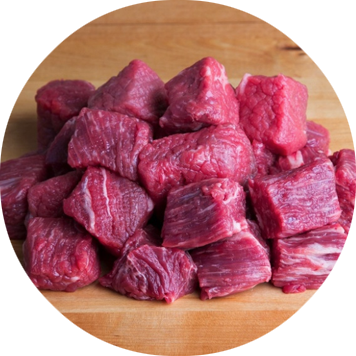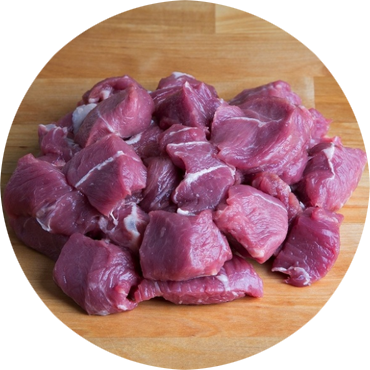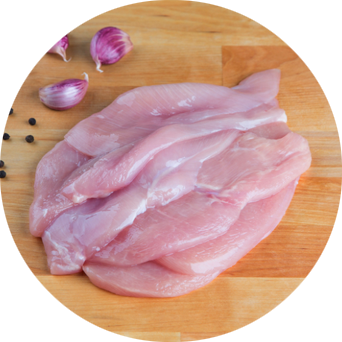All turkeys are NOT created equal! If this is your first kosher, pasture-raised turkey, please read on for info, tips, and tricks.
Looking for kosher, pastured turkey? Check out all of our turkey products here.
No Brine Required
All kosher meat is soaked and salted as part of the koshering process. That means your kosher bird has basically already been through a brining process, and doesn’t require any further brining to make it juicy and delicious. Still want to brine your bird? Read our suggestions here.
Don’t Stress About Feathers
In order for kosher poultry to be kosher, it can’t be plucked using scalding water as is common in the non-kosher market. Kosher birds are plucked using a cold-water method. (Incidentally, this method also ensures the birds are never ‘cooked’ or exposed to high temperatures, which is great for tenderness, flavor and, above all, cleanliness and health concerns). While our processing team does a great job, it’s not uncommon for kosher birds to have some pinfeathers. Please don’t worry. A few feathers aren’t going to ruin your bird.
In fact, there are a few easy ways to deal with it:
- Tweezers: This is the most labor intensive way to pull any remaining feathers — and it’s not our favorite way. Sure, with some work you can use tweezers to pull out any remaining feathers, but you can also tear the skin.
- Singe: Some folks prefer to use a match or lighter to singe any small pin feathers. While this works for some people, it’s also not our favorite method.
- Leave them: This is what we recommend! If you see any larger feathers, certainly feel free to remove them before cooking, but for pin feathers it makes sense to cook the bird with the pins in. Want to know a secret? You probably won’t even notice them once the bird is roasted. If you’d still rather remove them, use tweezers to pull them after the bird is cooked and they’ll slide right out without damaging the skin!
The Skinny on the Skin
Following up on our feather conversation–plucking birds can lead to skin tears. You may even tear the skin on your bird while prepping it at home when seasoning it or covering it in schmaltz. If that happens, don’t worry! Your bird is still going to be delicious.
Here are our tips for skin tears:
- Toothpick Fix: Use toothpicks to gently pull the skin over the exposed part, and pin the skin to the turkey. Space toothpicks about an inch apart. As the bird cooks the heat will help the torn skin stick to the meat and the toothpicks can be removed after cooking.
- Bigger Fix: If your bird has missing skin, you’ll want to cover the exposed part with fat (shmaltz or olive oil) and tin foil to keep the meat nice and juicy.
The Pasture-Raised Difference
You’re here because you made the choice to serve your friends and family a pasture-raised turkey. Not only can you be assured that the turkey you’re serving lived a happy, healthy life moving freely and enjoying all the benefits of being on pasture, you can also get excited knowing that your pasture-raised turkey is going to taste amazing!
Here are our tips and tricks for cooking a pastured bird:
- Cooking Time: Pastured birds cook faster than conventional birds. Whole Turkeys will cook at about 12-15 minutes per pound at 325F while Half Turkeys will cook at closer to 10 minutes per pound. Use a meat thermometer and check the temperature where the leg meets the breast.
- Color: The meat may still look “pink” even if it has reached temperature. Don’t continue to cook the bird! It is done when it hits 165F, even though it may look a little pink.
Pastured Turkey Prep & Cooking Tips
We’ve been cooking pastured turkeys for years now, and we’ve picked up a few tricks along the way to ensure you have great success with your bird.
- Allow time to defrost in the fridge. Figure 24 hours per 4-5 pounds of turkey (put the bird on a plate, tray or newspaper).
- Get the juices flowing. Cover the bird with schmaltz (rendered chicken or duck fat) before roasting, and baste with pan juices frequently. Put some quartered onions in the bottom of the pan to make delicious drippings, which will add depth and flavor to your gravy.
- Use a meat thermometer and check it regularly. This is the best way to ensure you don’t overcook your turkey. Remember the temperature will continue to rise about 10F a er you take the bird out of the oven. We cook our turkey to 165F.
- The breast may cook more quickly than the legs and thighs. If the breast is done, cover it with foil to prevent drying out. Alternatively, remove the leg/thighs and return those to the oven to finish cooking.







